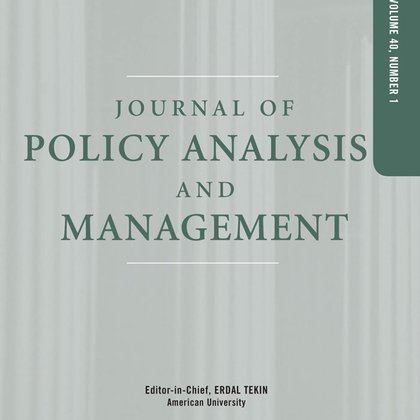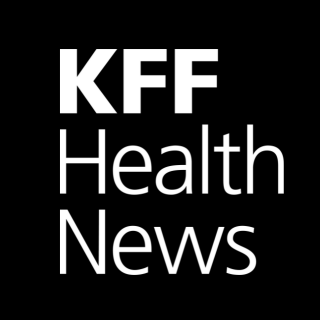
Melissa McInerney
@mpmcinerney
Followers
188
Following
137
Media
1
Statuses
29
Professor of Economics @TuftsUniversity
Joined July 2016
This arose from our work with many of these surveys to address questions about older, community-dwelling adults dually eligible for Medicare and Medicaid, funded by @AHRQNews. 6/6
0
0
0
We show that incorporating all available income and asset data results in the lowest number of errors and the lowest overall error rates, and there are the fewest errors for full, not partial, Medicaid. 5/6
1
0
0
We show how two types of errors—false negative and false positive errors—are impacted by incorporating limited income or asset information, relative to the commonly-used approach of solely comparing total income to the income threshold. 4/6
1
0
1
We provide guidance on how to best identify eligible respondents in household surveys that have limited income or asset information, such as the NHIS, ACS, CPS, and MEPS. 3/6
1
0
1
Analysis of public policy affecting dual Medicare-Medicaid eligibles requires accurate identification of survey respondents eligible for both Medicare & Medicaid. Doing so for Medicaid is particularly challenging given the complex eligibility rules tied to income and assets. 2/6
1
0
0
New in Health Services & Outcomes Research Methodology https://t.co/ZnGe77oD5Q w/@lindsaysabik, Jennifer Mellor (@williamandmary), & Venkatesh Ramamoorthy (@tuftseconomics): how to better identify community-dwelling older adults (65+) eligible for Medicaid in survey data. 1/6
1
2
11
New paper in @JAMAInternalMed with @aditipsen, @MattDEisenberg, Yang Wang, and Jerry Anderson. We find that out-of-network lab bills are common and likely associated with substantial out-of-pocket burden to patients with employer-sponsored insurance. More on this from @aditipsen:
What happens when a health economist receives an out-of-network lab bill? That’s right, write a paper about it. Out now in @JAMAInternalMed, we find that out-of-network labs affect many Americans with commercial insurance and can be costly.
0
2
17
New paper in Health Affairs examining effects of a Medicaid coverage cliff among near-poor Medicare beneficiaries. Medicaid supplements Medicare for older and disabled adults with incomes below poverty. What about those with income just above poverty? https://t.co/vVqFUZbU9v 1/6
3
14
52
The welcome mat effects identified in this analysis may yield important protective effects for older adults now dually enrolled in Medicaid and Medicare, in the form of improved health care access, health outcomes, and financial well-being. 10/10
0
0
1
Understanding the mechanisms underlying the welcome mat effect will inform policymakers regarding strategies to effectively increase Medicaid participation among older Medicare enrollees, and we provide empirical evidence of one such mechanism: the on-ramp. 9/10
1
0
1
Our findings have implications for research & policy. Researchers should be aware of these welcome mat effects when considering using adults age 65+ as a control group or for falsification tests when examining the impact of the ACA on working-age adults. 8/10
1
0
1
We estimate the on-ramp effect results in a 4 percentage point (9.5%) increase in Medicaid enrollment among 65 year olds residing in expansion states, a group young enough to gain coverage under the ACA Medicaid expansions before aging into Medicare. 7/10
1
0
0
Another possibility is that Medicaid expansions to working-age adults give adults age 60-64 firsthand experience with Medicaid, leading to higher enrollment at age 65. We call this the “on-ramp” effect & note that it’s unique to older adults and hasn’t been examined before. 6/10
1
0
0
Previous work has attributed the welcome mat effects for these younger groups to general increases in program awareness resulting from expanded outreach and enrollment assistance. These mechanisms may apply to older adults, too. 5/10
1
0
0
This is similar in magnitude to effects others have estimated among already-eligible children and working-aged adults. This is notable because older adults are not uninsured (they have Medicare) and are not impacted by the individual mandate or intra-family spillovers. 4/10
1
0
0
Older adults with low-income in expansion states are 1.8 percentage points more likely to have Medicaid than similar adults in non-expansion states, a 4.4% increase. 3/10
1
0
0
We find both a “welcome mat” effect—older adults in Medicaid expansion states are more likely to have Medicaid post-expansion—and an “on ramp” effect—those young enough to gain coverage under ACA expansions before turning 65 were more likely to have Medicaid age 65+. 2/10
1
0
0
New paper in @JPAM_DC with @lindsaysabik and Jen Mellor shows ACA Medicaid expansions—for adults ages 64 and younger—had spillover effects that increased Medicaid participation among older adults age 65+. https://t.co/R4AdLEJIsN 1/10
onlinelibrary.wiley.com
For many low-income Medicare beneficiaries, Medicaid provides important supplemental insurance that covers out-of-pocket costs and additional benefits. We examine whether Medicaid participation by...
1
2
9
Our workers need better protections.
NEW: Health care workers have flooded OSHA offices with 4,100 complaints about their employers since the pandemic started. We found 35 cases where a complaint was followed with a worker’s death. KHN/@guardianUS 📝: @By_Cjewett/@ShefaliL/@MMBaily
1
0
5




